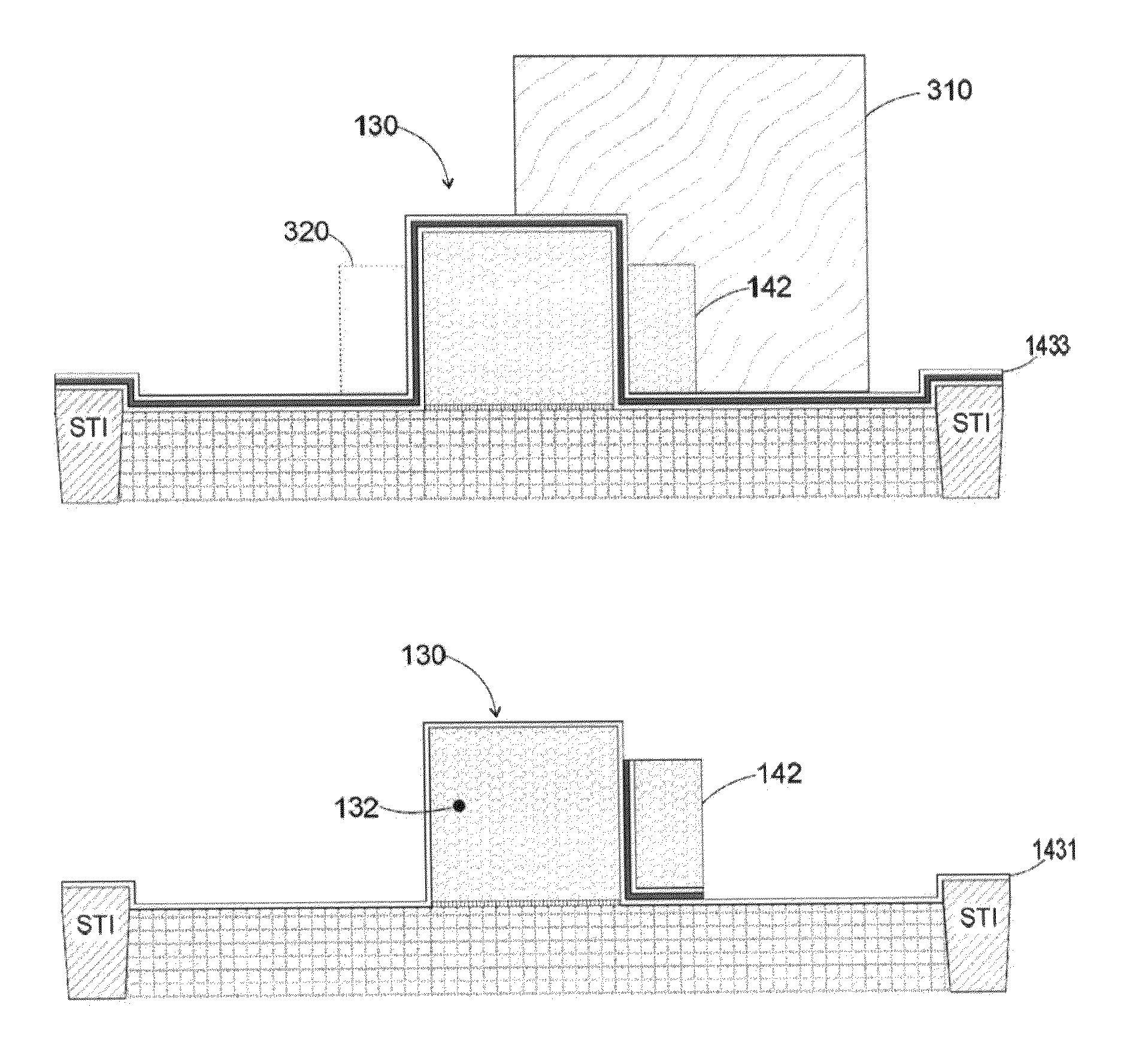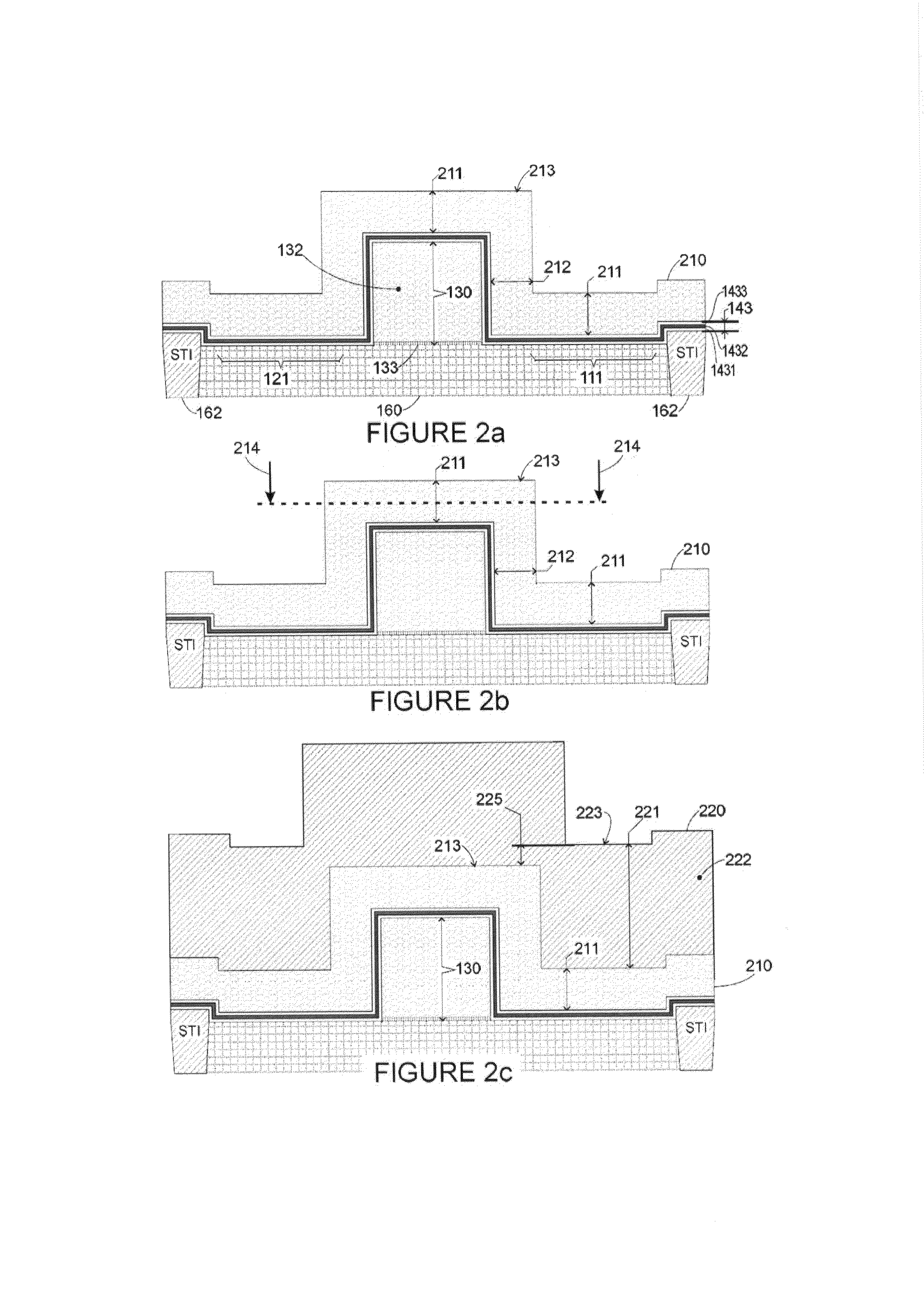Method of making a non-volatile double gate memory cell
- Summary
- Abstract
- Description
- Claims
- Application Information
AI Technical Summary
Benefits of technology
Problems solved by technology
Method used
Image
Examples
Embodiment Construction
[0036]It is recalled that one of the objectives of the invention is to obtain a broader zone for defining a contact area, thus making it possible to position a via for connection with the upper circuitry layers more easily on the control gate of the memory transistor.
[0037]It is clarified that, within the scope of the present patent application, the term “on” does not necessarily mean “in contact with”. Thus, for example, the deposition of a layer of polysilicon on a layer of insulator does not necessarily mean that the layer of polysilicon is directly in contact with the layer of insulator but that means that it covers it at least partly, either by being directly in contact therewith or by being separated therefrom by another layer or another element.
[0038]Before beginning a detailed review of embodiments of the invention, optional characteristics that may be used in association or alternatively if applicable are listed below:[0039]Advantageously, the step of chemical mechanical po...
PUM
 Login to View More
Login to View More Abstract
Description
Claims
Application Information
 Login to View More
Login to View More - R&D
- Intellectual Property
- Life Sciences
- Materials
- Tech Scout
- Unparalleled Data Quality
- Higher Quality Content
- 60% Fewer Hallucinations
Browse by: Latest US Patents, China's latest patents, Technical Efficacy Thesaurus, Application Domain, Technology Topic, Popular Technical Reports.
© 2025 PatSnap. All rights reserved.Legal|Privacy policy|Modern Slavery Act Transparency Statement|Sitemap|About US| Contact US: help@patsnap.com



